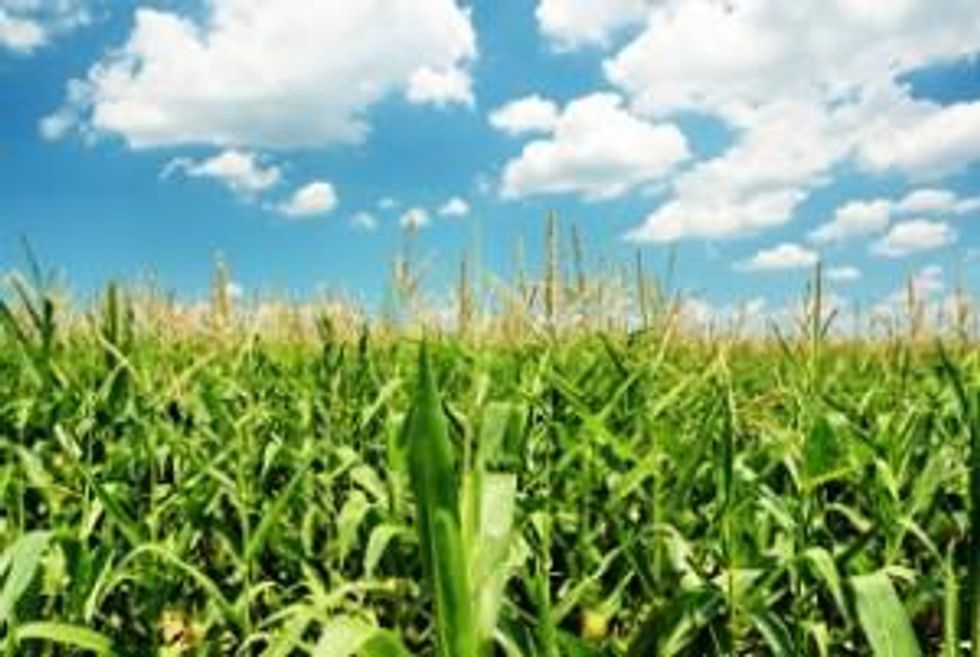As corn and soy bean prices rise, potash prices have come along for the ride. Despite the excitement, there are limitations on the potential for a spike in potash price.
Historically, potash demand and fertilizer stocks have moved in lock-step with corn prices as farmers typically respond to higher grain prices by planting more corn to meet demand. In turn, fertilizer inputs like potash often see a peak in demand following news of lower than expected yields.
Lower yield forecasts were widespread after the US-based National Oceanic and Atmospheric Administration (NOAA) reported this week that 55 percent of the continental United States was under moderate to extreme drought in June, the largest land area in the United States to be affected by a drought since December 1956.
The resulting conditions have led the USDA to cut its corn yield estimate by 20 bushels to 146 bushels per acre, invoking memories of 1988 when drought also devastated corn crop yields.
Drought-like conditions have carried into grain futures which hit record highs over the past week. Corn futures hit US $7.84 per bushel in intraday trading this week, just shy of the record US $7.99 reached in June 2011 while November deliveries of soy beans topped US $15.92/bushel just shy of its contract high reached earlier this week.
Corn drives potash demand
Corn and soy beans’ role as a food, fuel and feedstock have given them an unusual power over potash markets in recent years.
Mosaic (NYSE:MOS) CEO Jim Prokopanko summarized the relationship succinctly this week in an interview with Bloomberg. “The more grain is worth, the more fertilizer is worth.”
North American corn and soy bean prices have pushed shares of Agrium Inc. (TSX:AGU) and Potash Corp (TSX:POT) higher in anticipation of higher potash demand and price for the upcoming planting season.
Investors eager to cash in on the fall round of fertilizer application are expecting higher fertilizer company revenues. The run on fertilizer stocks has also translated into increases in FOB Vancouver KCl spot prices throughout the summer as the drought has developed.
Prices which had hovered around the US $480/metric tonne level earlier this year have begun to pick up moving toward the $500 level.
But despite the rise in spot prices, Mosaic contract price averages were lower for the quarter ending in May, averaging US $450/metric tonne level, the company reported this week. The company forecasts even lower potash prices for the next quarter, which corresponds to a seasonal slowdown, projected to settle within the US $415-440 range.
So, why the divergence?
Restraints on potash demand growth
Despite ambitious efforts needed to increase corn and soy bean yields to meet market demand, there are a number of limitations on just how high potash demand could push prices.
The first is that strong North American potash inventories are well prepared for the current demand push. Currently potash inventories are sitting at about 2.96 million tonnes, about 950,000 tonnes more than the five-year average.
Despite the timing of the demand push, coming just before the next season of sowing when demand is already tight, excess capacity is 1.25 million tonnes greater than it was in 2011 when prices rose by US $150/MT on FOB Vancouver spot prices. As a result, the run on potash prices this summer is unlikely to be as pronounced as it was in 2011.
Edlain Rodriguez, an analyst with Lazard Capital Markets LLC in New York told Bloomberg in an interview that “It is very unlikely Canpotex will get a higher price [in its upcoming negotiations with China]. North American inventories are relatively high.”
The second restraint on potash purchasing is what is known as the ‘ploughing down’ effect. This refers to farmers mindfully knocking down crops that are deemed too damaged by drought to be profitably harvested.
Dan Basse, president and analyst for AgResource Co. said in a recent Reuters interview that “As the crop gets worse, there’s an historical precedent for increased abandonment. If you talk to farmers, they’d tell you that there’s a fair amount of fields being zeroed out by crop adjusters.”
To produce one bushel of corn, 1.2 pounds of potash (K2O) is typically required. However, since potash can accumulate within the soil (unlike nitrogen which requires yearly applications), farmers will have the choice over the coming weeks whether, and how much of, their corn they want to plough down to minimize the fall potash application.
As a result, current excitement about declining corn yields impact on potash markets should be tempered. The percentage of corn receiving potash application has also been in decline in the US over the past two decades. USDA figures show that the rate of potash per fertilized acre has also been in decline over this period.
Securities Disclosure: I, James Wellstead, hold no direct investment interest in any company or commodity mentioned in this article.
